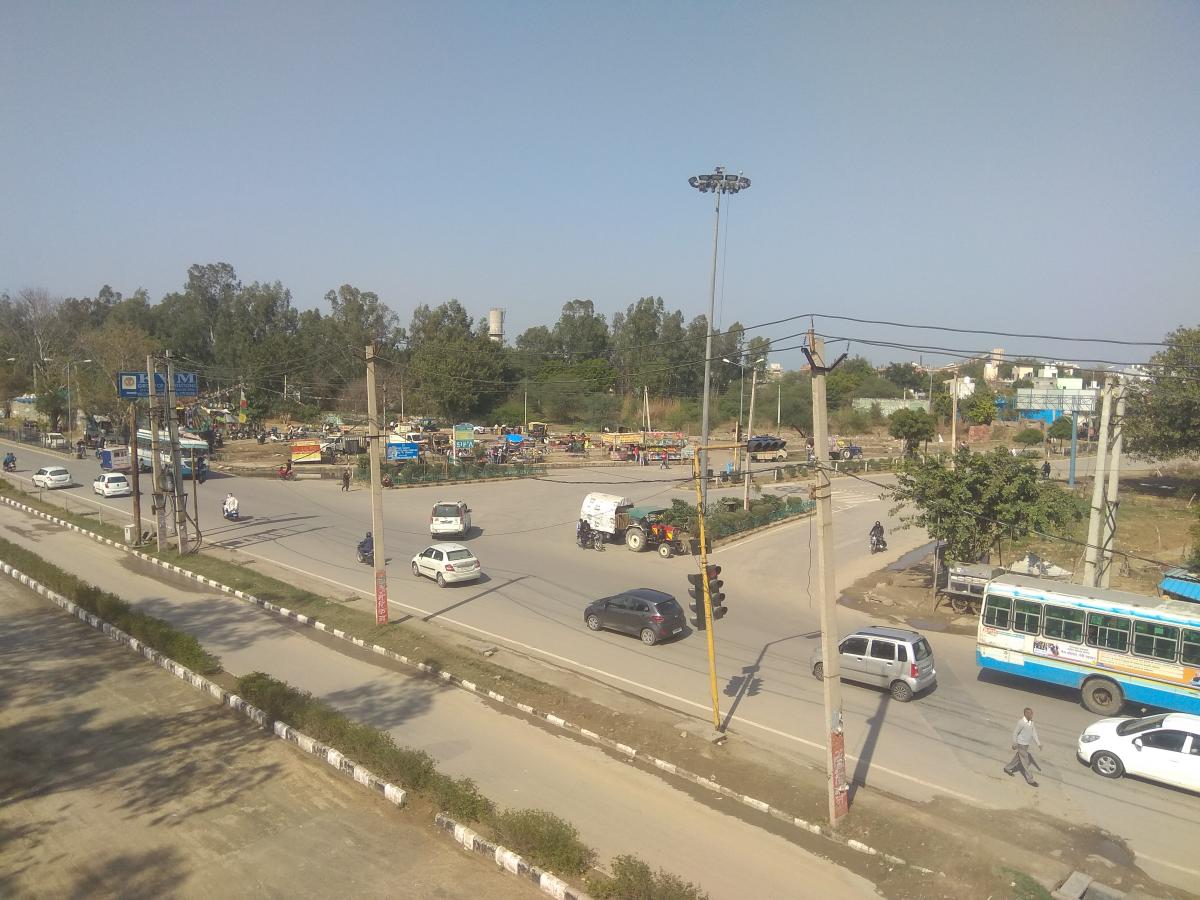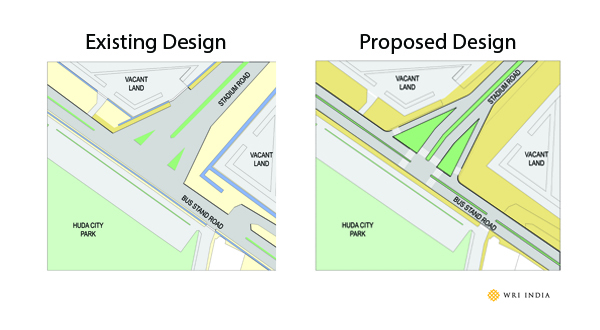Creating Safer, Child-Friendly Streets
An ideal child-friendly city integrates the voice, needs, priorities and rights of children in its public policies, programmes and decisions. An important aspect of such a city is to provide children with an opportunity to live in a safe, secure and clean environment, with access to green spaces. By this definition, do our cities qualify as child-friendly? In India, 66 percent of parents believe that their child could get seriously hurt in a road traffic crash, and 92.5 percent of parents believe that there is a need to improve road safety for children.
WRI India, in partnership with the Rohtak Police, the Municipal Corporation of Rohtak and the NASSCOM Foundation, started the Safer Commute for School Children project in Rohtak in May 2018. The project envisions Rohtak as a city where children can travel safely on the road, either by foot, cycle or transit, regardless of whether they are accompanied by an adult or commuting on their own.
As part of this project, WRI India conducted focus group discussions with students, parents and teachers from 5 schools in Rohtak. During these discussions, participants of varying age groups voiced a general sense of fear during their daily commutes due to recurring problems. Some of the major challenges faced are in the form of unruly motorists, disrespectful behaviour from other road users, encroachment by vendors and parked vehicles on sidewalks, speeding vehicles, congestion caused by shared auto-rickshaws, poor road conditions, and others. Addressing these challenges may require behavioural change, but a closer look reveals infrastructural deficiencies to be the underlying problem. Therefore, while we aspire to make our streets safe for children, it is important to first make them safe for all users.
The dangers of incorrect road design
What is the image that forms in your mind when you think of a road? Usually, one would imagine asphalt bordered by pavements and trees, enabling vehicles to travel from one place to another. A significant part of any road is the black surface, technically called the carriageway. The primary function of the carriageway is to provide thoroughfare to motorised and non-motorised transport. However, a road in its entirety is not only used by moving vehicles, but also pedestrians, as well as space for utility infrastructure and street vendors. Keeping this in mind, the width of a carriageway on the road should ideally be based on the number of vehicles plying on it, yet it is made to accommodate as many vehicles as possible.
When undue space is allocated for vehicles, the carriageway becomes under-utilized, resulting in avoidable chaotic road traffic. For instance, a road user might speed on an empty road or drive in the wrong direction and create a traffic jam. Speeding is encouraged when there is space available for a vehicle to speed. Similarly, driving in the wrong direction, on-street parking, sudden braking and abrupt turns are all the result of providing more carriageway space on the road than required.

Image: The Bus Stand Road and Stadium Road intersection in Rohtak before the installation of temporary intersection redesign measures
Intersection redesign to improve road safety
As part of the ongoing work on the Safer Commute for School Children project, WRI India redesigned a major intersection in Rohtak, with 3 simple interventions:
Reclaiming the intersectional area: Humans walk at an average speed of about 5 km/hr. This means that a person takes about 45 seconds to cross 60 meters of carriageway. The intersection of Bus Stand and Stadium Roads in Rohtak is 60 meters wide. In the proposed design solution, WRI India reduced the distance required to cross the intersection from 60 meters to just 15 meters. These design interventions help cut down the average crossing time for a pedestrian by one-fourth, thereby proportionately reducing pedestrians’ exposure to crashes. The design also reduced the area of the intersection from about 1550 sqm to 150 sqm. This means that the reclaimed 1400 sqm area can now be used to make the intersection an interactive public space for pedestrians and children.
Reducing vehicle speeds: Previously, the large turning radius at the intersection resulted in vehicles turning at speeds as high as 50 km/hr. The nature of these risky turns increased the likelihood of serious injuries to pedestrians in the event of a crash. By creating sharper turns, the vehicles are now forced to come to a near halt before making a turn. Earlier, the widening of lanes as a vehicle approached the intersection led to haphazard driving and veering in the wrong direction. By making the lane width consistent throughout, the traffic flow was streamlined to encourage lane driving.
Reallocating spaces: As most of the intersectional area is built as carriageway, there is an over-abundance of space for vehicles. This had led to activities like sudden pick-up and drop by auto-rickshaws, and parking along the traffic islands, right at the intersection. With iron-fenced and heavily landscaped traffic islands, coupled with non-existent footpaths, there was no space for pedestrians and cyclists. The proposed redesign of the intersection optimised traffic flow by reducing the width of the carriageway such that it was consistent on all arms of the intersection. The proposed design also provided refuge islands in the median, where pedestrians can wait before crossing the intersection.

Image: The existing and proposed design of the intersection
Way forward
As proof of concept, the redesigned intersection was recreated overnight using temporary installations like cones, barricades, and ropes, on the night of 8th February 2019. Appreciating the simplicity and success of the design, Rohtak administration has agreed to make the changes permanent. With a promising commitment made by the city administration, WRI India will continue to make children’s commute safer in Rohtak. In the coming months, similar interventions will be tested at 9 other intersections identified across the city. Each temporary installation will be tested for a month, followed by preparation of detailed drawings for permanent execution.
Image: The Bus Stand Road and Stadium Road intersection in Rohtak with the installation of temporary intersection redesign measures
Click here to view Vaibhav's webinar on Enabling Safe Commutes for School Children Case of Rohtak, Haryana: https://youtu.be/H2bZP0im_QI
